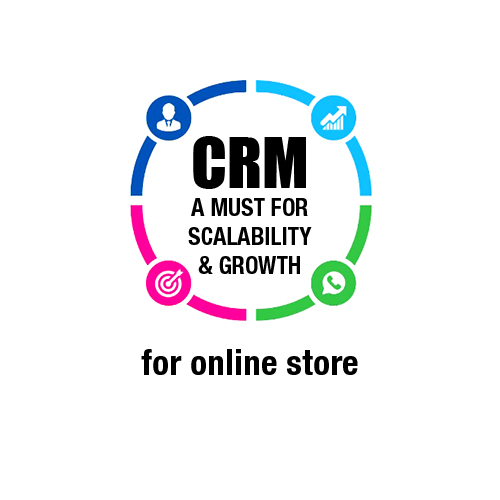 CRM for online store
CRM for online store
Programming & Tech
CRM development for online store
Product Info
CRM development for an online store involves implementing a system to manage customer relationships effectively. It includes features like customer database management, order tracking, sales analytics, lead management, and integration with other tools. By customizing the CRM system to your specific needs, integrating communication channels, and training your team, you can improve customer satisfaction, streamline operations, and drive sales. Monitoring performance and continuously improving the CRM system ensures its effectiveness in meeting your business objectives.Description
-
Developing a CRM (Customer Relationship Management) system for an online store can be a valuable investment to improve customer satisfaction, increase sales, and streamline business operations. Here's a step-by-step guide to help you with CRM development for your online store:
-
Define your objectives: Determine your specific goals for implementing a CRM system. This could include better customer segmentation, personalized marketing campaigns, improved customer support, or enhanced sales tracking.
-
Identify required features: Consider the features and functionality you need in your CRM system. Common CRM features for an online store include customer database management, order tracking, sales analytics, lead management, customer communication tools (email, chat, etc.), and integration with other systems (e-commerce platform, marketing tools, etc.).
-
Choose a CRM platform: Select a CRM platform that aligns with your requirements and budget. There are various options available, such as Salesforce, HubSpot, Zoho CRM, and many others. Consider factors like scalability, customization options, ease of use, integration capabilities, and cost when making your decision.
-
Customize the CRM system: Tailor the CRM system to meet your specific needs. Set up custom fields, workflows, and automation rules to align with your business processes. Configure the system to integrate with your e-commerce platform, marketing tools, and other relevant systems to ensure seamless data flow.
-
Customer data management: Import and organize your customer data within the CRM system. This includes information like customer profiles, contact details, purchase history, and any other relevant data. Ensure data accuracy and consistency throughout the process.
-
Implement automation: Utilize automation features to streamline repetitive tasks and improve efficiency. For example, automate email marketing campaigns, lead nurturing processes, or customer support ticket management. Automation can save time and improve customer experience.
-
Integrate communication channels: Connect communication channels like email, chat, or social media with the CRM system. This integration allows you to track customer interactions, respond promptly, and provide a consistent experience across different channels.
-
Train your team: Provide comprehensive training to your employees to ensure they understand how to use the CRM system effectively. Train them on data entry, reporting, customer management, and any other relevant functionalities. User adoption is crucial for CRM success.
-
Monitor and analyze performance: Leverage the reporting and analytics capabilities of your CRM system to gain insights into your sales, customer behavior, and marketing campaigns. Monitor key performance indicators (KPIs) and make data-driven decisions to optimize your processes.
-
Continuously improve: Regularly assess the effectiveness of your CRM system and make necessary adjustments. Solicit feedback from your team and customers to identify areas for improvement. Stay updated with the latest CRM trends and technologies to maximize the benefits of your CRM implementation.
Remember that CRM development is an iterative process. Start with the essential features and gradually expand and customize the system based on your evolving needs and feedback from your team and customers.
-

